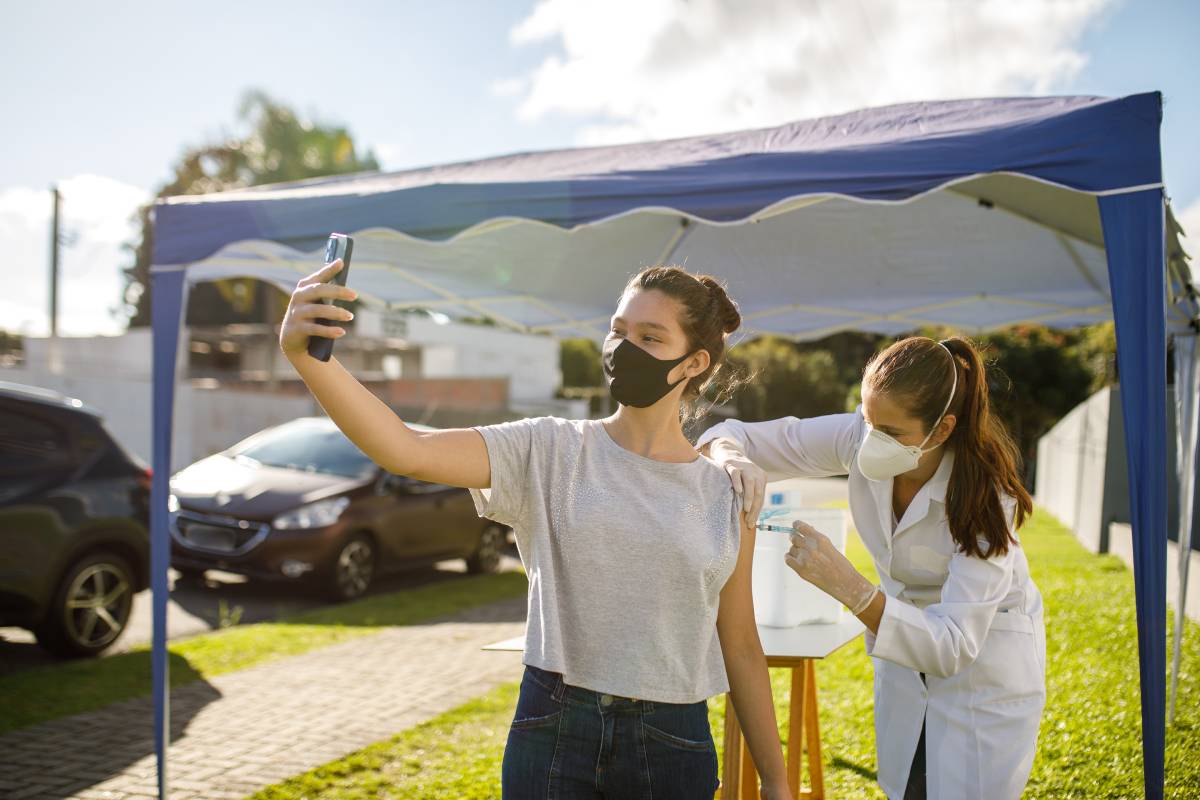
In order to adequately respond to the global nature of the COVID-19 pandemic, governments in most countries are working to rapidly vaccinate their residents. Some countries have been successful, though COVID vaccine rollout has been plagued by unequal access. Others have sufficient supply but have struggled with distribution. Meanwhile, low- and middle-income countries have faced difficulties obtaining doses, causing governments and bodies such as the World Health Organization (WHO) to respond.
As of January, Israel had begun to vaccinate citizens at the fastest pace of any nation. The Council on Foreign Relations reported that within two weeks of launching its campaign, Israel had vaccinated 15% of its population [1]. By early February, nearly 90% of the country’s over-60 population had been immunized. These efforts provided a framework for a successful vaccination campaign: between mid-January and early February, the 60+ age cohort saw a 41% decrease in infections and a 31% decrease in hospitalizations [2]. However, in late February, when roughly 50% of Israel’s population had received at least one dose of vaccine, an estimated 0.8% of the Palestinian population in the West Bank and Gaza had access to a dose [3]. The United Arab Emirates shares several advantages with Israel — namely a small population and universal healthcare system — enabling smooth immunizations. By mid-January, the Emirates had delivered vaccine doses to roughly 20% of its residents [1]. The United Kingdom has also had success: in mid-February, 12 million people had received a dose, a number comparable to Israel’s entire population. Nearly every person in the United Kingdom now lives within ten miles of a vaccination center, with those in extremely remote areas able to visit mobile vaccination sites [4].
Other higher-income countries have struggled with logistics and access despite the ability to purchase supplies. As of February 11, the Biden administration had purchased 600 million doses of vaccine from Pfizer and Moderna [5], but the United States and several other Western countries still face vaccine hesitancy rates in excess of 50% [6]. In Canada, a network of local and national systems has been responsible for distribution. In late January, 75% of doses distributed to provincial and territorial governments had yet to be administered to individuals [7].
Meanwhile, in lower-income countries, the sheer expense of vaccines has proven to be a challenge. As of February, over 75% of vaccines had been administered in just 10 countries, according to the WHO and UNICEF [8]. Meanwhile, lower and middle-income countries comprise 85% of the worldwide population [9]. Both governments and NGOs have responded to this inequality. COVAX, an initiative led by WHO, UNICEF, GAVI, and other bodies, has set a goal of delivering 2 billion doses in 2021, with at least 1.3 billion in low- or middle-income countries. Governments in higher-income countries have contributed to the effort, with the U.S. pledging $4 billion to COVAX over two years. However, low- and middle-income countries cannot vaccinate more than 20% of their populations through COVAX, indicating that inequality will remain a problem [8]. The World Bank has pledged $12 billion for vaccine rollout efforts in the developing world and both Russia and China have distributed vaccine supplies to countries across Asia and the Middle East [10].
Global comparisons indicate that a range of logistical, geographical, and political barriers must be overcome to achieve widespread vaccination. These barriers differ from country to country, rooted in various healthcare systems, ethnic conflicts, cultural attitudes, and financial inequity.
References
[1] Felter, Claire. What to Know About the Global COVID-19 Vaccine Rollout So Far. Council on Foreign Relations, 2021, www.jstor.org/stable/resrep29866.
[2] Mallapaty, Smriti. “Vaccines Are Curbing COVID: Data from Israel Show Drop in Infections.” Nature, U.S. National Library of Medicine, pubmed.ncbi.nlm.nih.gov/33547434/.
[3] Kennes, Matthias. Opinion, 22 February 2021. “The Stark Inequality of COVID-19 Vaccination between Israel and Palestine: MSF.” Médecins Sans Frontières (MSF) International, 31 Mar. 2021, www.msf.org/stark-inequality-covid-19-vaccination-between-israel-and-palestine.
[4] Baraniuk, Chris. “Covid-19: How the UK Vaccine Rollout Delivered Success, so Far.” BMJ, 2021, doi:10.1136/bmj.n421.
[5] Division, News. “Biden Administration Purchases Additional Doses of COVID-19 Vaccines from Pfizer and Moderna.” HHS.gov, 12 Feb. 2021, www.hhs.gov/about/news/2021/02/11/biden-administration-purchases-additional-doses-covid-19-vaccines-from-pfizer-and-moderna.html.
[6] Sallam, Malik. “COVID-19 Vaccine Hesitancy Worldwide: A Concise Systematic Review of Vaccine Acceptance Rates.” Vaccines, vol. 9, no. 2, 2021, p. 160., doi:10.3390/vaccines9020160.
[7] Marchildon, Gregory P. “The Rollout of the COVID-19 Vaccination: What Can Canada Learn from Israel?” Israel Journal of Health Policy Research, vol. 10, no. 1, 2021, doi:10.1186/s13584-021-00449-x.
[8]B urki, Talha Khan. “Challenges in the rollout of COVID-19 vaccines worldwide.” The Lancet. Respiratory medicine vol. 9,4 (2021): e42-e43. doi:10.1016/S2213-2600(21)00129-6.
[9] Wouters, Olivier J, et al. “Challenges in Ensuring Global Access to COVID-19 Vaccines: Production, Affordability, Allocation, and Deployment.” The Lancet, vol. 397, no. 10278, 2021, pp. 1023–1034., doi:10.1016/s0140-6736(21)00306-8.
[10] “World Bank COVID-19 Response.” World Bank, www.worldbank.org/en/news/factsheet/2020/10/14/world-bank-covid-19-response.

